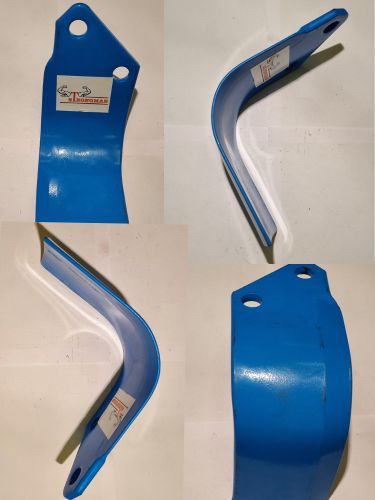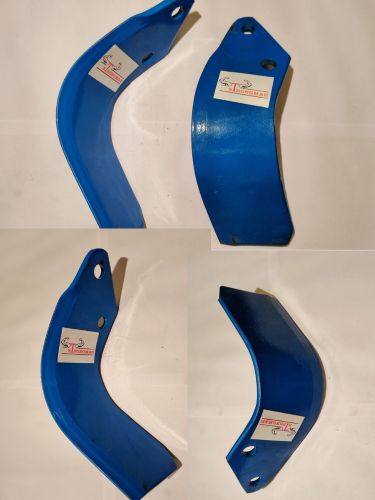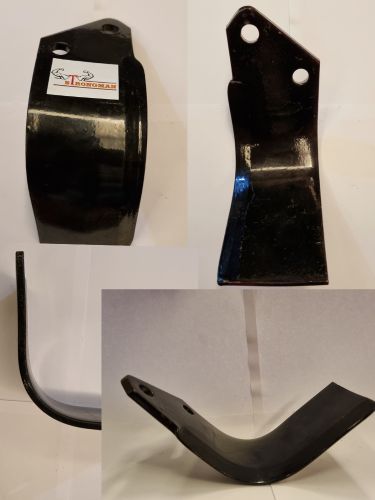Romita Agro Industires
RotavatorBlade

C - Type
The C-type Rotavator blade is a cutting-edge advancement over its predecessors. Inspired by the plowshares of old, this innovative blade design optimizes the interaction between the machine and the soil. The 'C' shape not only defines its structure but also symbolizes the efficiency, consistency, and precision it brings to modern farming practices.
The C-type design is crafted to efficiently blend and mix soil particles. As the blade moves through the soil, it tills, breaks up clumps, and incorporates organic matter seamlessly. This homogenized soil texture promotes optimal root growth and enhances water and nutrient absorption.

LJF - Type
The LJF-type Rotavator blade is a testament to progressive design principles in the realm of agricultural machinery. Inspired by the ever-evolving demands of modern farming, this innovative blade design has been meticulously engineered to enhance soil cultivation efficiency and overall performance..
Crafted from high-quality materials and subjected to stringent manufacturing processes, the LJF-type blade is built for durability. Its resilience against abrasion and wear ensures a longer operational life, reducing maintenance demands and operational downtime.
The LJF-type blade's precision cutting action and reduced resistance lead to a more fuel-efficient operation. This advantage is a crucial aspect of modern farming practices, promoting sustainability by conserving resources.

L - Type
The L-type Rotavator blade represents a harmonious blend of traditional wisdom and contemporary engineering. With inspiration drawn from the plowshares of old, this innovative blade design has been thoughtfully engineered to optimize the process of soil cultivation and enhance overall performance.
The L-type blade's design is characterized by its sharp edges and unique shape, facilitating efficient soil cutting and thorough mixing. As it interacts with the soil, the blade's geometry ensures proper incorporation of organic matter, leading to improved soil structure and enhanced nutrient distribution..
The design of the L-type blade contributes to maintaining a consistent tilling depth across the working width. This uniformity is critical for ensuring consistent plant growth, as all crops receive the same level of soil preparation.
